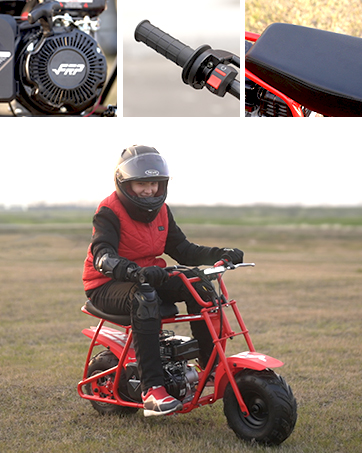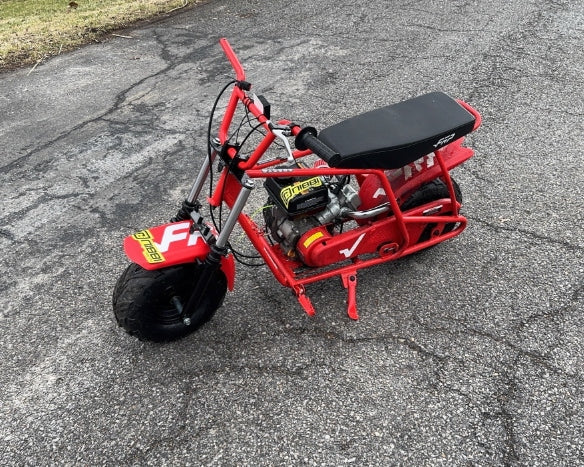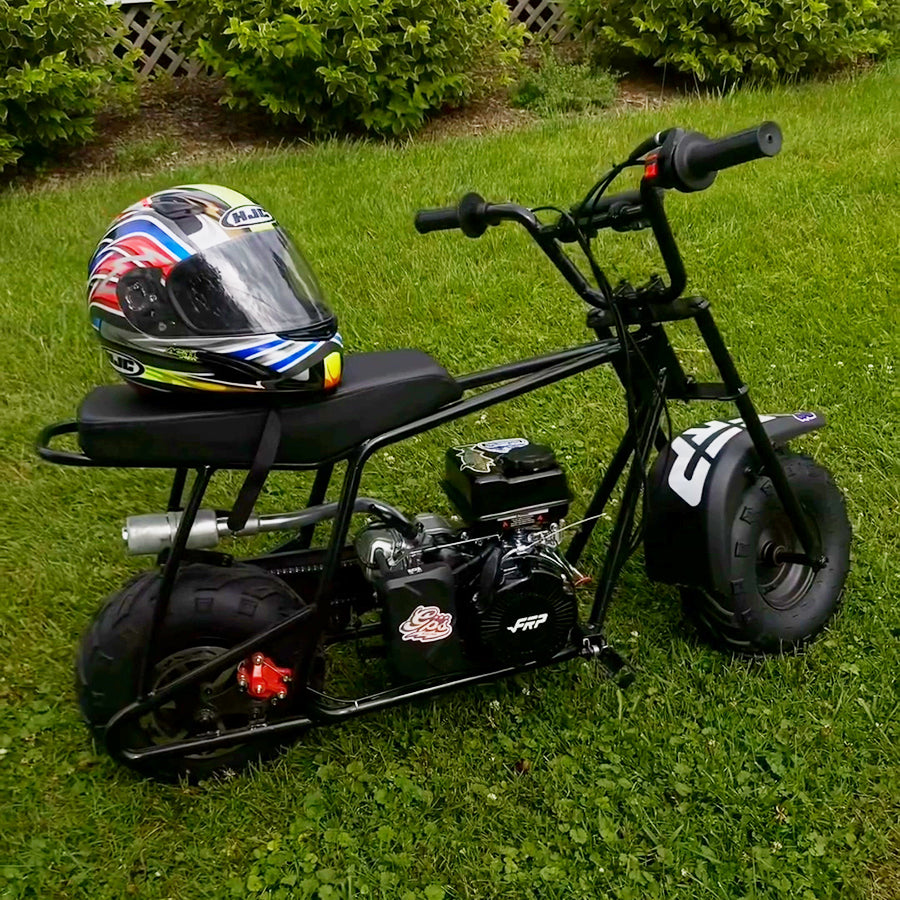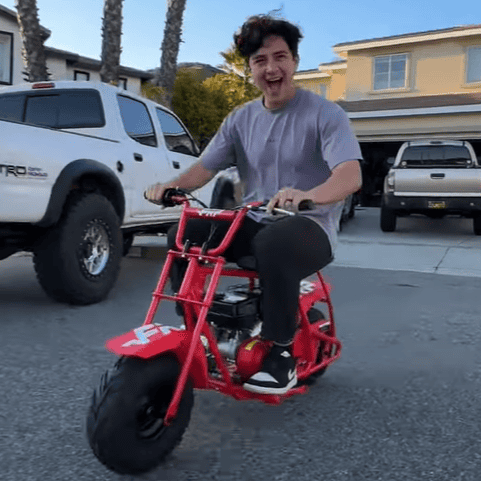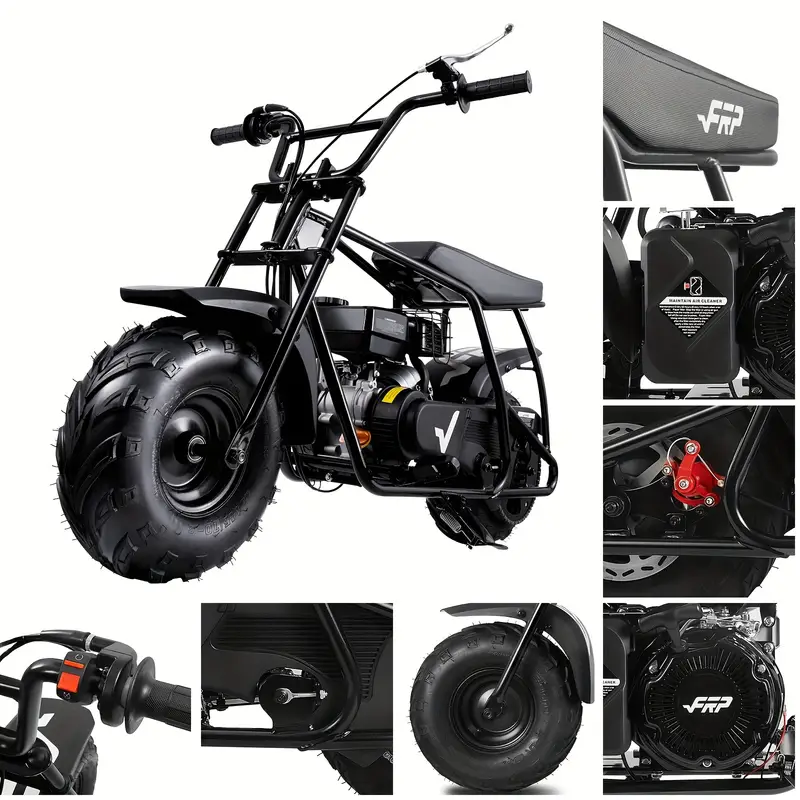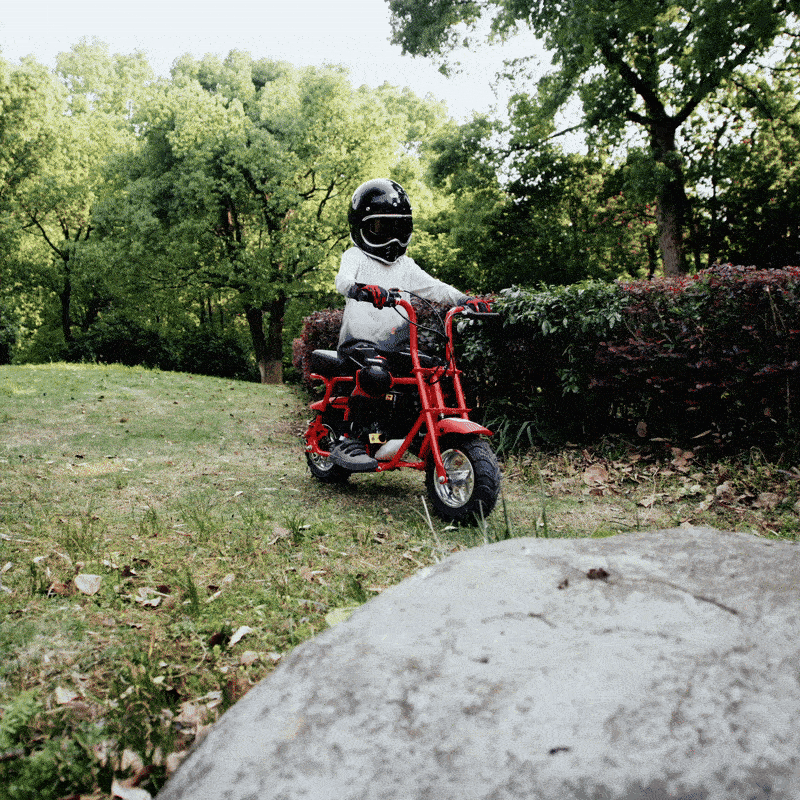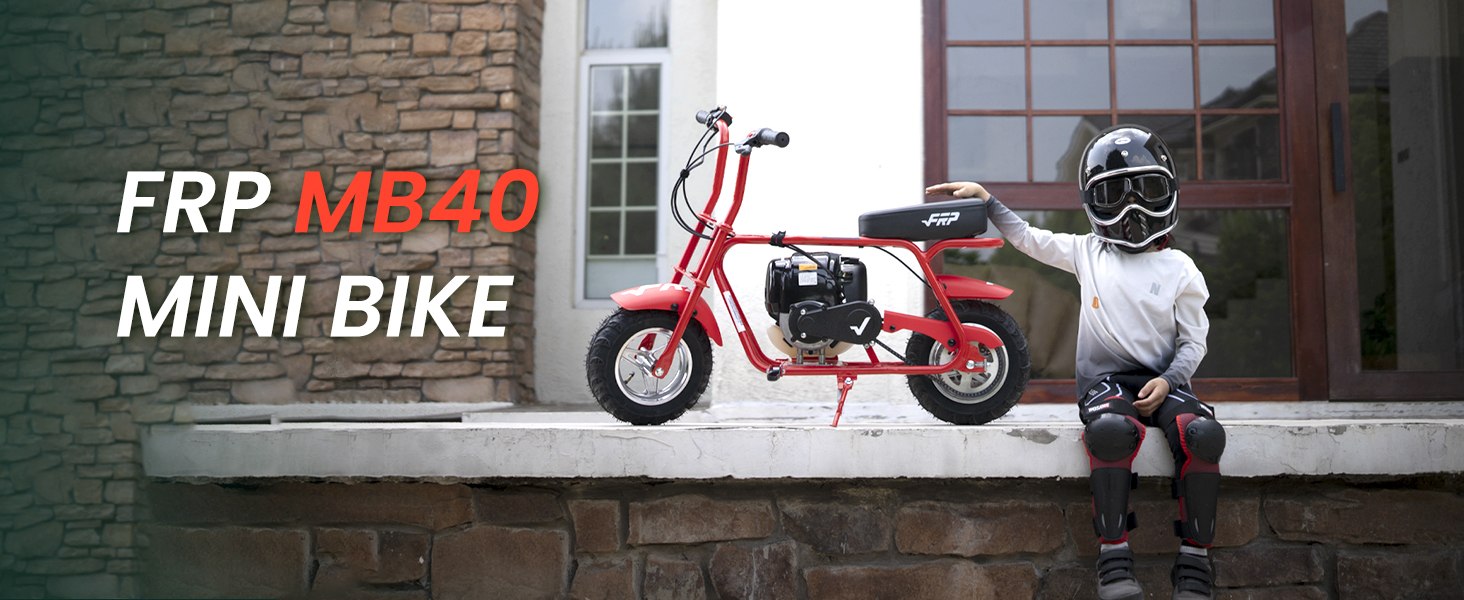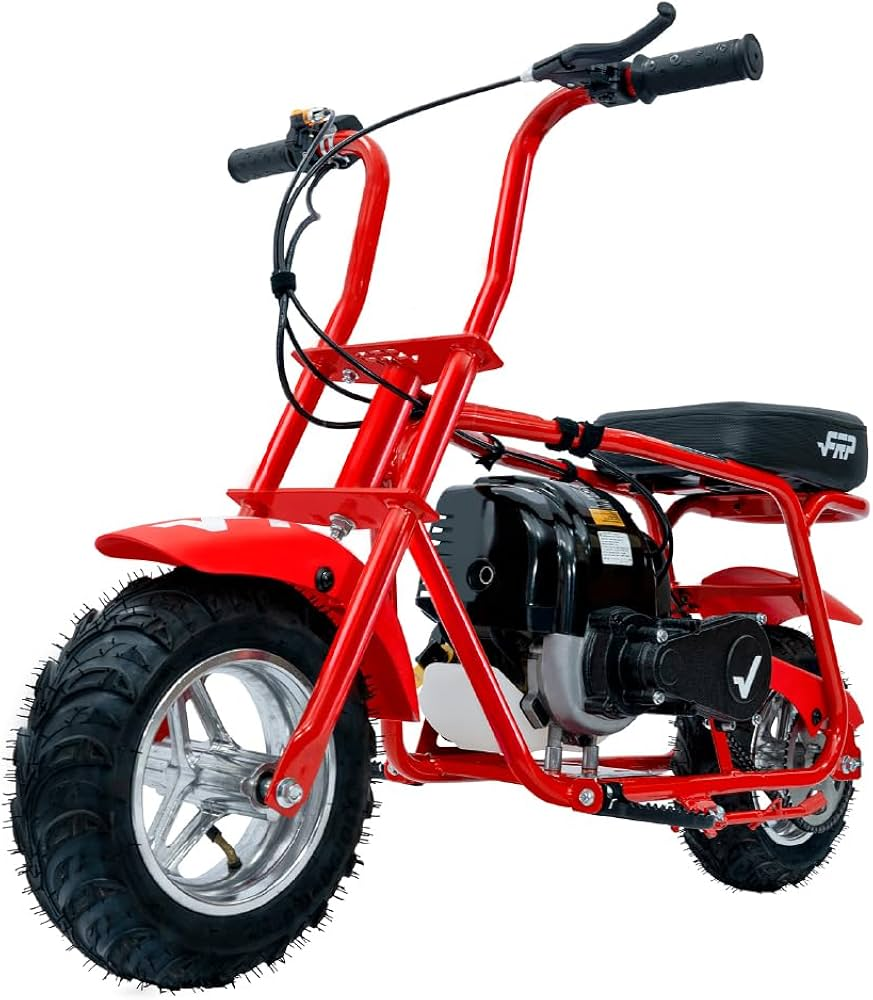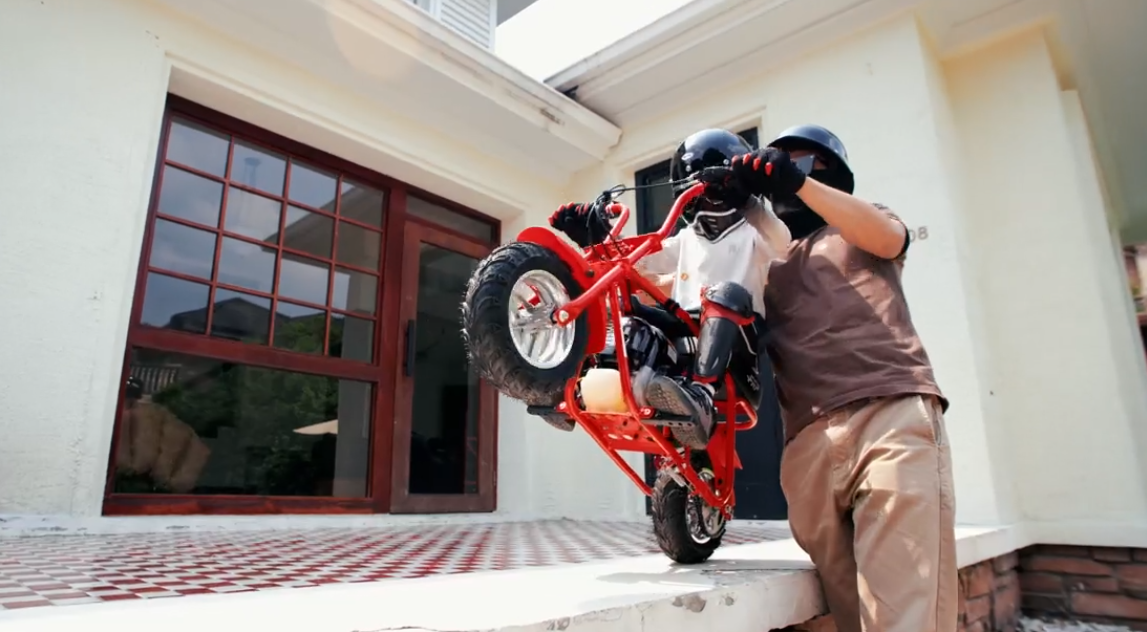Understanding mini bike weight limits is more than just a number on a spec sheet. It's the key to safety, performance, and peace of mind. In 2025, mini bikes have become more powerful, more durable, and more accommodating than ever.
Why does mini bike weight capacity matter so much? Because pushing past it can lead to damage, poor performance, and dangerous riding situations.
Enter the GMB100 — a gas mini bike built with serious riders in mind. It’s setting new standards for weight capacity, making it one of the top choices for budget-conscious adult riders.
This guide covers everything you need to know about picking the right mini bike for your body weight and riding needs.
Understanding Mini Bike Weight Limits
Why Weight Capacity Matters for Safety
● Weight impacts how your bike handles on the road.
● Overloading a bike reduces stability and control.
● More weight equals longer stopping distance.
● Ignoring limits can cause damage or breakdowns.
There are also insurance implications. If you exceed the rated limit and crash, some claims may be denied.
How Weight Limits Are Determined
● Engineers test mini bikes based on frame stress, wheel load, and suspension strength.
● They simulate real-world conditions using crash dummies and heavy load scenarios.
● Materials like steel and alloy affect the final limit.
● Manufacturers label bikes only after thorough testing and certification.
The Relationship Between Weight and Performance
● Heavier riders slow acceleration, especially on small engines.
● Stopping power drops as weight increases.
● Fuel efficiency dips because the motor works harder.
● Handling may feel less sharp with more load.
These are key reasons to match your weight to the bike’s design.

The GMB100: Setting New Standards in Weight Capacity
Impressive Weight Capacity That Accommodates Adult Riders
● Carries up to 220 pounds with no strain.
● Built with a tough 99cc OHV 4-stroke engine.
● The bike itself weighs just under 80 pounds.
● 13-inch tires grip the road well and support the frame.
The GMB100 proves that not every gas mini bike is built the same.
Engineering That Supports Heavy Riders
● A reinforced steel frame handles bumps and rough terrain.
● Shocks absorb weight smoothly even off-road.
● Brakes are upgraded for extra power when fully loaded.
● All parts are designed for durability and control.
Performance Characteristics for Different Weight Ranges
● You still get solid takeoff power up to full weight limit.
● Speed stays consistent even with heavier riders.
● Gas usage stays efficient thanks to smart engine tuning.
● The ride remains steady with well-distributed weight.
Weight Categories and Mini Bike Selection
Lightweight Riders (Under 150 Pounds)
● You can ride nearly any gas mini bike in this range.
● Expect quick acceleration and high fuel efficiency.
● The ride will feel smooth and nimble.
● Handling is at its sharpest.
Medium Weight Riders (150–200 Pounds)
● Look for mini bikes with clear ratings above 200 pounds.
● The GMB100 is a great fit here.
● It offers a perfect balance of speed and comfort.
● Suspension and brakes work well without upgrades.
Heavy Riders (200+ Pounds)
● Look for mini bike for adults 300 pounds rated or close.
● Safety becomes a bigger concern at higher loads.
● Choose a bike with a large engine (at least 99cc).
● Make sure the seat and tires are built for comfort.
Safety Considerations for Different Weight Ranges
Weight Distribution and Stability
● Sit centered to keep balance.
● Don’t lean too far back or forward.
● Wider tires help maintain grip.
● A low seat helps lower the center of gravity.
Braking Performance Under Load
● Heavier riders need stronger braking systems.
● Keep brake pads in good shape.
● Practice emergency stops on grass or sand.
● Consider bikes with disc brakes over drum brakes.
Structural Integrity and Durability
● Overloading can bend the frame or damage the axle.
● Keep up with regular maintenance checks.
● Replace parts showing signs of wear early.
● Check your owner’s manual for service tips.
Choosing the Right Mini Bike for Your Weight
Weight Capacity Guidelines for Safe Operation
● Always leave a 10–15% buffer under the listed max.
● If you're 200 pounds, aim for a 220–250 lb capacity.
● Riding too close to the limit stresses the motor.
● Comfort also drops if the bike is undersized.
Features That Matter for Different Weight Ranges
● Look for cushioned seats and wide handlebars.
● Suspension must be rated for your weight class.
● Brakes must respond well to heavier loads.
● Welded steel frames handle more stress.
Testing and Validation Procedures
● Check for stamped weight limits on the bike frame.
● Ask the dealer about test results or reviews.
● Look for third-party tests online. See examples at Popular Mechanics.
● Confirm the warranty covers riders in your weight group.
Maintenance Considerations for Heavy Riders
Increased Maintenance Requirements
● More weight equals more pressure on the engine.
● Change oil every 20–30 hours of riding.
● Clean the air filter regularly.
● Monitor brake wear every month.
Component Durability and Replacement
● Tires wear faster under more pressure.
● Suspension bushings may need replacement sooner.
● Chain tension should be checked often.
● Use OEM parts designed for mini bike weight capacity.
Long-Term Investment Protection
● Log maintenance in a notebook or app.
● Store your bike indoors or under a cover.
● Consider investing in steel-reinforced upgrades.
● All this protects resale value.

The GMB100 Advantage for Adult Riders
Why the GMB100 Excels for Heavier Riders
● 220-pound limit covers most adults.
● The 99cc engine doesn't struggle under weight.
● Frame is solid and built for long rides.
● All systems work well even at the top weight range.
Performance Benefits That Matter
● The bike feels stable at all speeds.
● Acceleration stays smooth and predictable.
● Braking is quick and responsive.
● Gas mileage stays decent even with a full-grown rider.
Investment Protection for Adult Riders
● Durable components reduce the need for upgrades.
● Parts are widely available and easy to find.
● GMB offers support and service options.
● Value holds well if you keep it in good shape.
Find real GMB100 reviews and specs at Mini Bike Insider.
Making the Smart Choice for Your Weight
Weight Assessment and Selection Process
● Weigh yourself before shopping.
● Add gear weight to your total (helmet, tools, etc.).
● Match your total to the weight limit range.
● Choose safety over maxing out specs.
Testing and Validation Before Purchase
● Ask the seller for a test ride.
● Pay attention to comfort and power delivery.
● Look for signs of strain like engine noise or slow braking.
● Confirm the bike feels stable even on turns.
Long-Term Considerations
● Your weight may change over time.
● Choose a bike that gives extra room to grow.
● If needed, look into suspension upgrades.
● Make sure you can resell the bike easily if needed.
Conclusion
The GMB100 is raising the bar for mini bike weight capacity in the sub-$1000 class. It delivers on power, safety, and long-term value.
When picking the right gas mini bike, always check:
1. Your current and future weight
2. Performance expectations
3. Comfort and safety margins
Whether you're new to mini bikes or upgrading to a mini bike for adults 300 pounds, this guide gives you the confidence to ride smart, safe, and within limits.
Ready to find your perfect ride? Explore bikes like the GMB100, and start your mini bike journey today with the right match for your weight.

